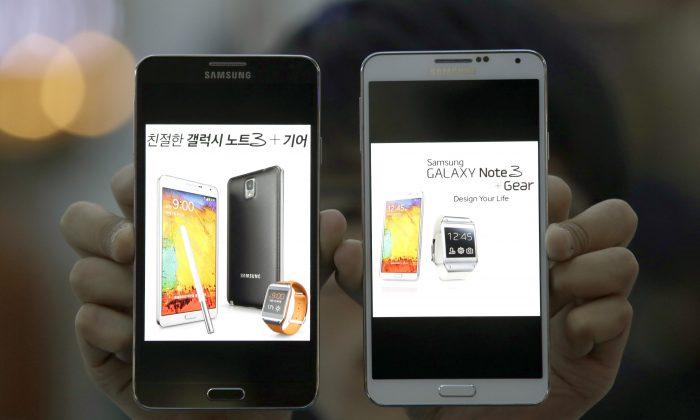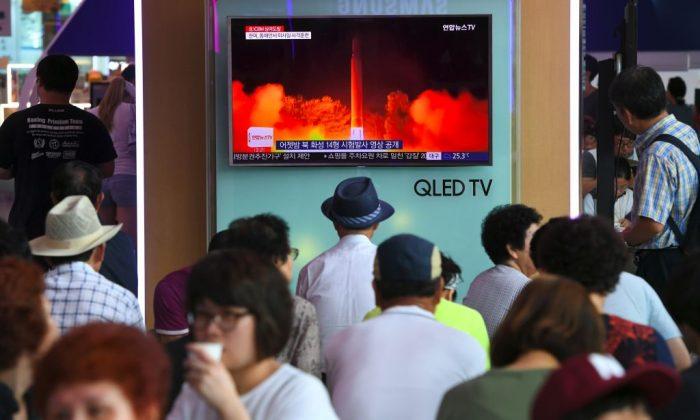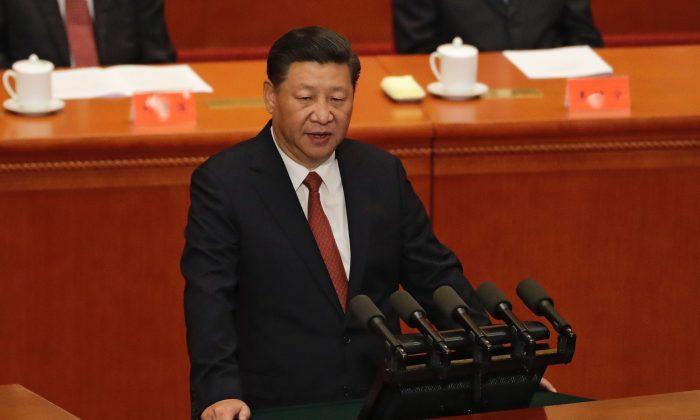What are some rumored specs of the Samsung Galaxy Note 4?
Samsung is expected to reveal the new phablet in a Unpacked press conference on September 3, along with what should be Samsung’s first virtual reality headset.
Although Apple is also expected to announce its new 5.5-inch phablet in September as well, the Note 4 will have one selling point that Apple will likely never have — a stylus pen.
The Note 4 will have Samsung’s next generation S Pen, and judging by Samsung’s teaser video, it will be better at tracking the user’s handwriting.
The phone itself should pack either a 2.5GHz quad-core Qualcomm Snapdragon processor or a 1.2 GHz octa-core Exynos chipset, a 2560 x 1440 pixel display, 3GB of RAM, 32GB of storage, a 16 mega-pixel rear camera, a 3.68 mega-pixel front facing camera, and run the Android 4.4.3 KitKat.
Check out the trailer below.
AP: A Closer Look: Reading Tablets Decent, But Needed?
NEW YORK—E-book readers are great for reading books, but they can’t be used get directions or watch videos of people dumping ice over their heads.
Tablets can.
In partnership with Samsung, Barnes & Noble released a reading-centric tablet last week, the Galaxy Tab 4 Nook. Amazon, meanwhile, has the Kindle Fire tablets.
Of course, you can simply install Nook and Kindle reading apps on an iPad or a non-Nook Galaxy. The iPad even comes with iBooks installed. Are reading-centric tablets really a better way to experience the printed word?
Let’s take a closer look.
___
— GALAXY TAB 4 NOOK ($179):
Turn it on, and you’re greeted with a banner that takes up roughly the top third of your screen. This is your library, where you'll find novels, comic books, magazines and newspapers that you’ve recently read or purchased, along with non-reading content that Barnes & Noble sells — namely, movies, TV shows and games. This library banner isn’t available on other devices, though Amazon tablets have a similar feature called Carousel.
If there’s a book or newspaper you read regularly, you can pin it to the home screen. Usually, you can do that only with apps.
A book icon on the lower left corner of the home screen takes you to where you left off in the Nook reading app. If you stop reading to send an email, you can click the book icon to relaunch the Nook app and resume reading. This feature is also found only on the Nook tablet. Unfortunately, you have to go back to the home page first. It would be better to have that book icon wherever you are, whether that’s email or Tinder’s dating app.
The tablet’s reading app works much like the one on other devices. You see what page you’re on and the number of pages left, but not the estimated time left to finish.
The app on the Nook tablet and other Android devices also lets you hide the device’s status bar, so you’re not distracted by notifications at the top. That way, you’re not tempted to set aside your book to check Facebook. Unfortunately, the iPhone and iPad version doesn’t offer that option.
At roughly the size of a paperback, the Samsung Nook tablet also feels nice in my hands. The Nook GlowLight e-reader, which Barnes & Noble designed on its own, has a larger frame surrounding the display. That makes it bulky, even though its screen is just 6 inches diagonally, compared with 7 inches on the Nook tablet.
Beyond that, the new Nook tablet works just like any other Android device. It doesn’t outshine rivals, but it works well at the basics. You can buy e-books, movies and other content through Barnes & Noble. Or you can use Google’s online Play store — though you'll need Google’s apps to read or watch what you buy there. Pictures taken with the 3 megapixel rear camera aren’t as sharp as what other tablets offer, but at least it has one. Previous Nook tablets didn’t.
One disappointment: Although you can create separate profiles for members of the family, including limited-use ones for kids, you need to use the same Barnes & Noble account across the various profiles.
___
— KINDLE FIRE HDX (starts at $229):
Although the Kindle Fire uses Android, Amazon has modified it so much that it has little resemblance to other Android tablets. And there’s no Google Play store to be found. Everything gets bought through Amazon. While you can install a Kindle app on the Nook tablet, you can’t get Nook on the Kindle because Amazon’s store doesn’t have it.
The Kindle reading app is good and comparable to what’s found on the Kindle Paperwhite e-reader and the Kindle apps for other devices. You get not just the page number, but also the estimated time left based on your reading speed.
And Amazon has packed its devices with reading extras, such as quick access to character summaries, details about places mentioned and other information culled from Wikipedia and other sources.
The Kindle Fire is less reading-centric than the Nook. A tab up top offers quick access to shopping, for instance. The Kindle is also too big to grip comfortably with one hand. The 7-inch version of the Kindle Fire has the same screen dimensions as the Nook, but the Kindle has a larger frame. The width is more like that of a CD case than a paperback.
That said, the Kindle’s screen resolution is better than the Nook’s, so text looks sharper.
There’s also a Quiet Time button to block notifications. It’s easily accessible by swiping from the top, whereas the feature to hide the status bar on the Nook is buried in the settings. You can turn Quiet Time on and off manually, enable it during certain hours every day or have it turn on automatically when you’re doing a specific task, such as reading a book or watching a movie.
The Kindle also comes in several flavors. There’s a larger one, with an 8.9 inch screen. There are also versions with cellular capabilities. The only choice you get with the Nook tablet is the color of the frame. Only the 8.9-inch Kindles have rear cameras, though — at 8 megapixels.
Although you can’t set up separate profiles for others in your family, you can enable a kids mode with restrictions on use.
___
— AND THE REST:
I still believe dedicated e-readers are better for reading. Hiding the status bar and turning on Quiet Time can help block distractions, but with e-readers, you don’t have distractions to begin with. The Kindle Paperwhite is the best of the e-readers I’ve tried.
A tablet is good if you want to do more than reading and don’t want to carry multiple devices. I don’t think you‘ll want to buy either the Nook or the Kindle Fire simply because it’s a reading-centric tablet. You’d want them because they are good tablets.
But they are not the only good tablets out there.





Friends Read Free